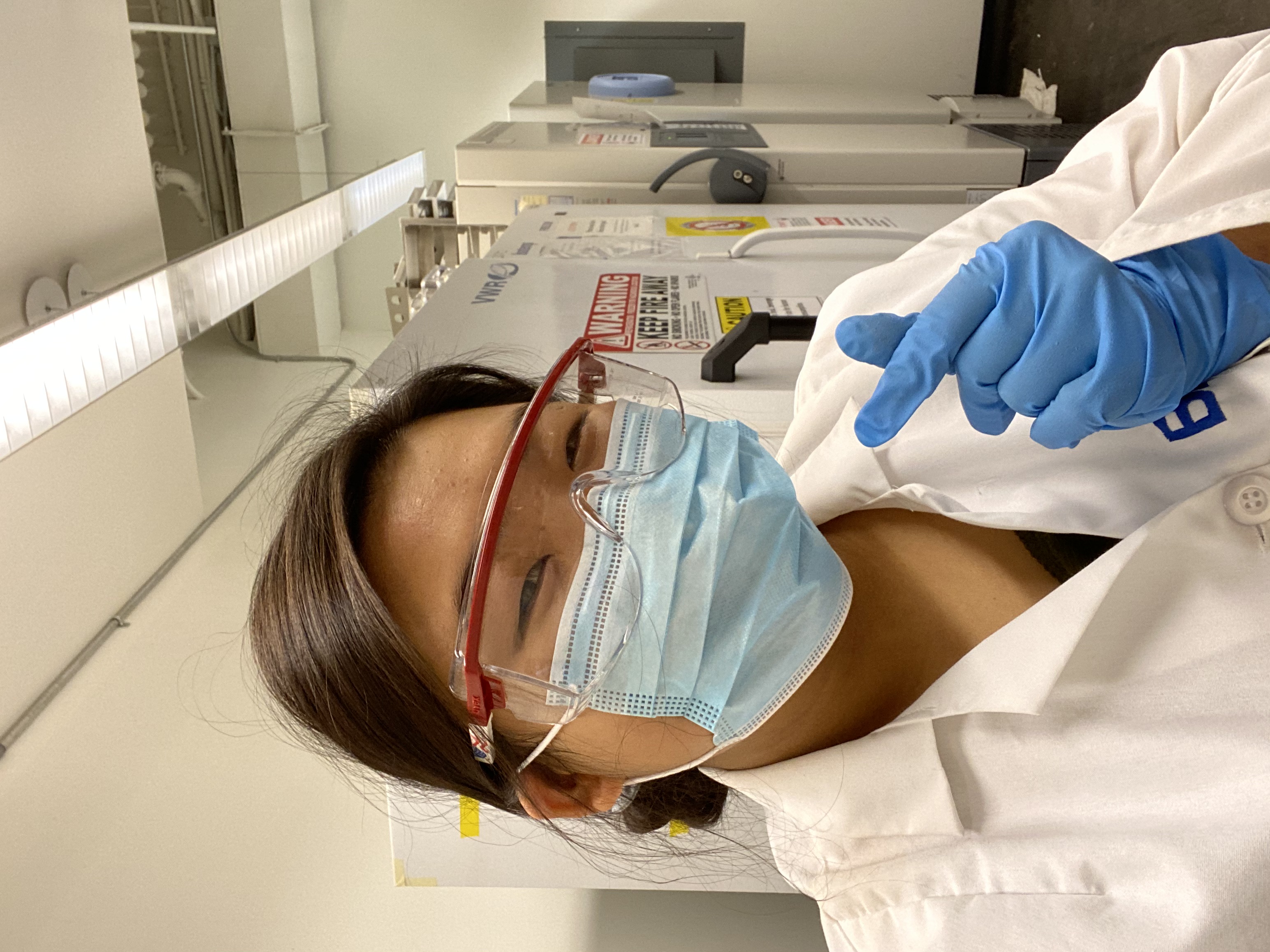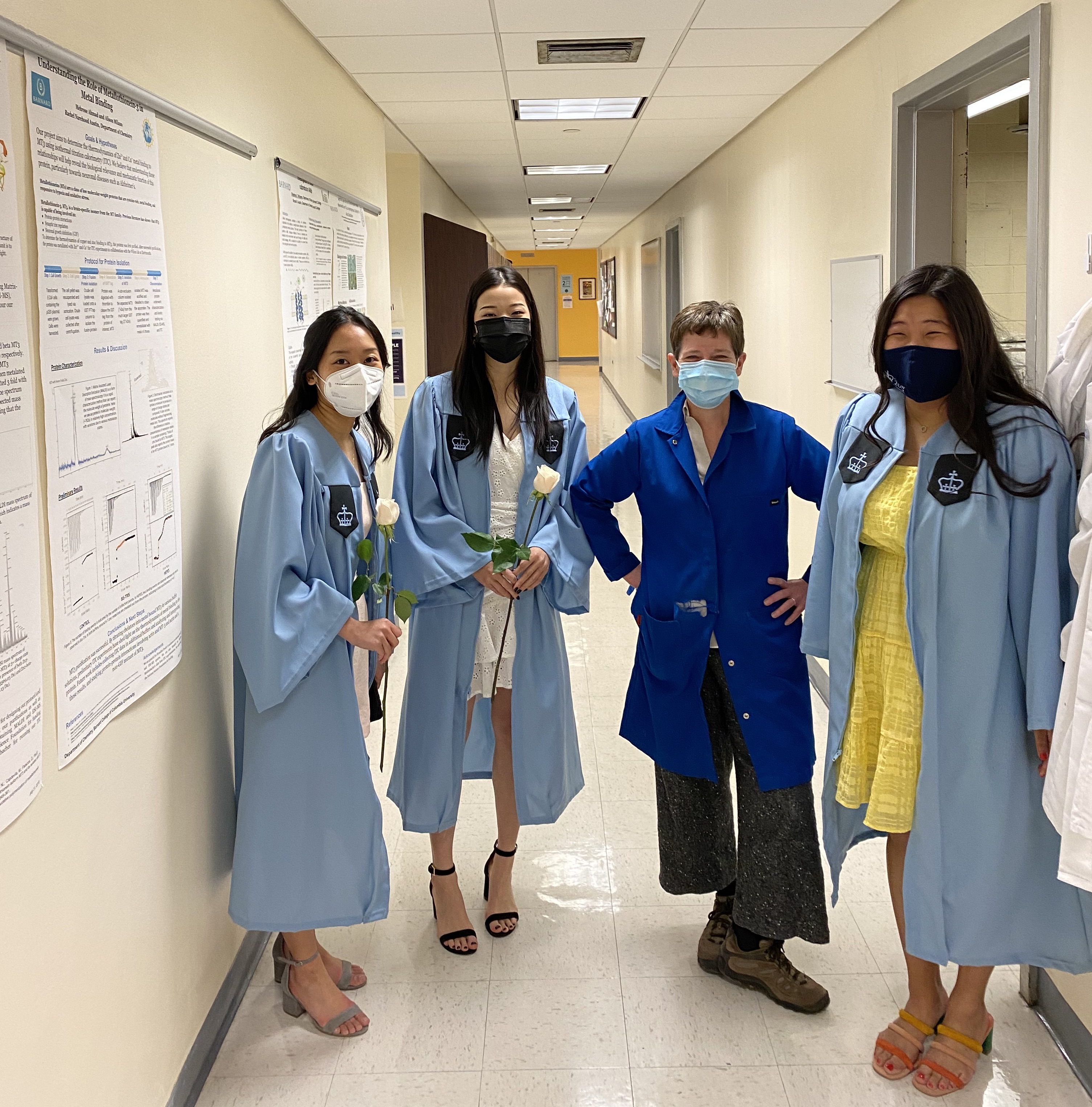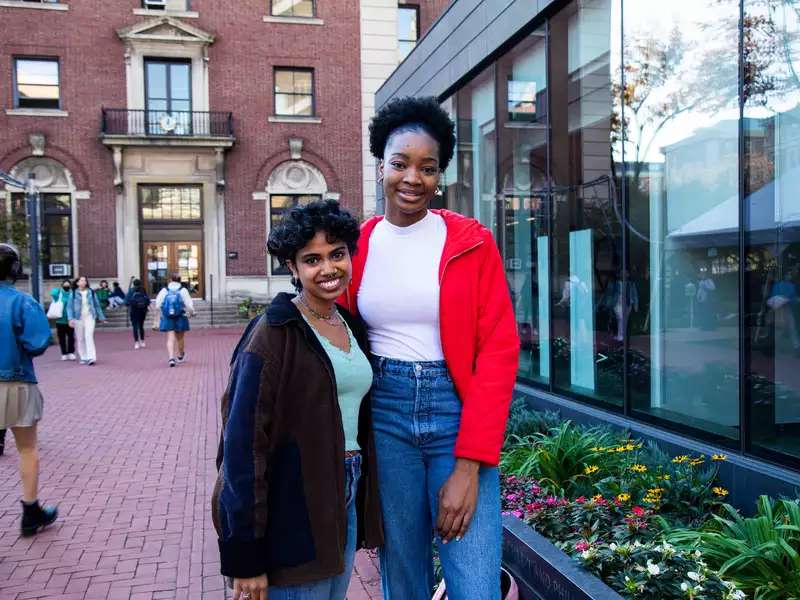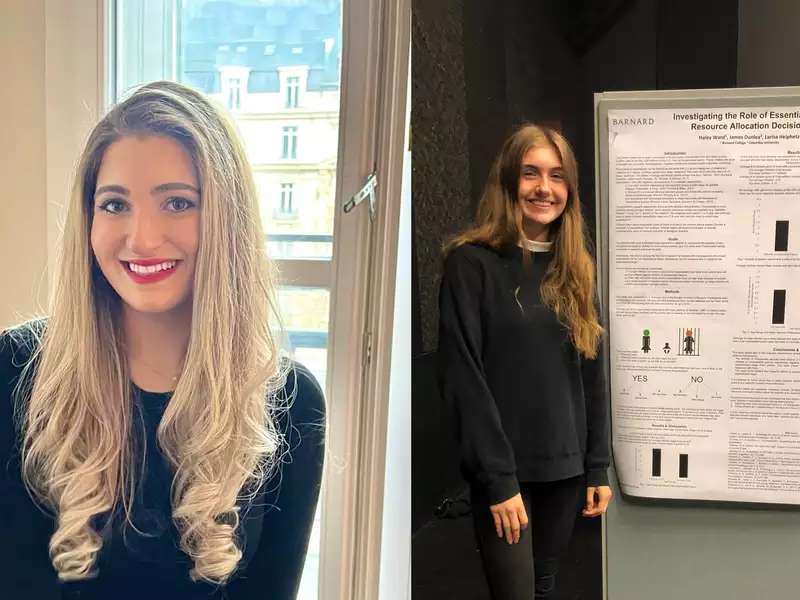The journey into scientific research for graduate student Juliet Lee ’21 began when she arrived at Barnard and began working in the laboratory of Rachel Narehood Austin, the Diana T. and P. Roy Vagelos Professor of Chemistry. Lee, a biochemistry and molecular biophysics Ph.D. candidate at the California Institute of Technology who studied the alkane monooxygenase enzyme during her time at Barnard, attributes her love for chemistry to the time she spent studying in Austin’s lab and working as a peer tutor.
Although Lee gained invaluable science knowledge through classes and research, what stood out most to her was the supportive environment fostered by her peers, professors, and advisors. It was this dedicated learning community that pushed her to apply for the Beckman Scholars Program, a 15-month mentored research experience for outstanding undergraduate chemistry and biology students that she was awarded in 2020. With Austin as her mentor, Lee was able to continue researching the metalloenzyme in graduate school that she first became interested in at Barnard.
Fall 2020 was also the start of Lee’s senior year, which she spent studying virtually due to the COVID-19 pandemic. Inspired by a hiking memoir she read during that time, Lee decided to walk the entirety of Manhattan as a tribute to her life as a student in New York City. Lee’s “Walking NYC” project — an 11-month undertaking that she documented online — follows her experiences traveling along every street in Manhattan, with a plethora of photos and short, meditative writings on each avenue and road she traversed.
In this “Research Reflections” Q&A, Lee discusses the impact of Barnard’s scientific community on her graduate studies, as well as how she grew as a researcher through the “Walking NYC” project.
What is your research topic, and what led you to pursue it?
Professor Austin introduced me to the world of alkane monooxygenase (AlkB), an enzyme that catalyzes the oxidation of alkanes into alcohols. AlkB has two iron atoms at its catalytic site, surrounded by a nitrogen-rich coordination environment. What is the chemistry of AlkB’s catalytic reaction? How does the structure of AlkB’s catalytic site influence substrate preference? These are the questions I sought to answer in my research in the Austin Lab, beginning in my freshman year, taking me to Liang Feng’s lab at Stanford, and culminating just this past year.
These questions led me to investigate the effect of point mutations on AlkB’s catalytic activity, as well as how to purify and crystallize AlkB from a new organism for X-ray studies, and measure the distance between AlkB’s two iron atoms. My research at Barnard multiplied my love for chemistry and introduced me to the difficult yet mind-blowing nature of scientific research.
Why is it important to study this topic?
Understanding the structure and function of AlkB is both environmentally and medically important. One does not need to explain the pernicious damage caused by oil spills on the marine environment. The AlkB enzyme is expressed by microorganisms that naturally metabolize toxic hydrocarbons, playing a role in the natural bioremediation of these polluted environments by beginning the breakdown of the alkane component in petroleum. Learning how AlkB degrades alkanes may inform new approaches to oil spill cleanup.
Furthermore, AlkB is structurally related to fatty acid desaturases and hydroxylases in humans. Mutations of both of these enzymes have been associated with cancer, neurological diseases, and metabolic disorders. Understanding the AlkB catalytic site and how it works thus informs our understanding of these enzymes fundamentally as well as their role as potential therapeutic targets.
What was your experience as a Beckman Scholar like, and how did it help support your research?
I was able to dedicate more time to my research and spend more time working in the lab to pursue my research goals. As a mentor, Rachel Austin encouraged me to read the literature and design and critically analyze my own experiments. While I attended both Beckman Symposiums virtually, they exposed me to a diverse breadth of biochemical research and enabled me to interact with scientists across the country. The Beckman Scholarship also afforded me the opportunity to be one of the first students to restart research in Altschul Hall in the fall of 2020, for which I feel such gratitude.
How did Barnard influence you as a scientist and researcher?
Perhaps what the College taught me most was the value of a scientific community. My first teachers in the Austin Lab were Shoshana Williams ’20 and Allison Forsberg ’20, who showed me how to use a pipette and exemplified what it means to be a curious scientist. During my last summer at Barnard, I had the privilege of working with three undergraduate students: Tierani Green ’24, Shivani Tripathi ’24, and Dahlia Luongo ’22.
Despite masks and continued uncertainty, imparting some of my own knowledge while also being challenged to think creatively about how to guide students through their first research experience is one of my favorite memories of Barnard. The people in Altschul, from the faculty to the staff to my peers and friends, taught me that good scientific research goes hand in hand with good teaching and genuine care for others.
What inspired you to start your “Walking NYC” project, and how did it impact you?
When I came back to New York City in the fall of 2020, I felt an extreme range of emotions: wariness and fear, immense gratitude and privilege, loneliness, questioning, and sorrow to leave this city after only four years. I’d also recently read Wild, Cheryl Strayed’s memoir of walking the Pacific Crest Trail. Somehow these pieces and everything else in my head in September 2020 coalesced into a goal to walk all of the streets in Manhattan before I left the city. It was my second thesis, I suppose.
My senior year at Barnard was what I might call a very selfish year: studying and in the lab mostly alone, applying to graduate schools and Zoom interviewing, writing my thesis and my walking blog. Walking got me out of my head and into the lives of others, into new worlds of Manhattan that I had not imagined. Walking during the pandemic — masks coming on and off, the hope of a vaccination, so many delivery bikers, and so many without houses — made me feel small. Walking and witnessing the diverse lives of others on the streets reminded me of the privilege it is to be a student and to be able to learn, to observe, and to wonder. [It’s] the privilege of a scientist and a scientist’s obligation to others.
– SOLBY LIM ’22





